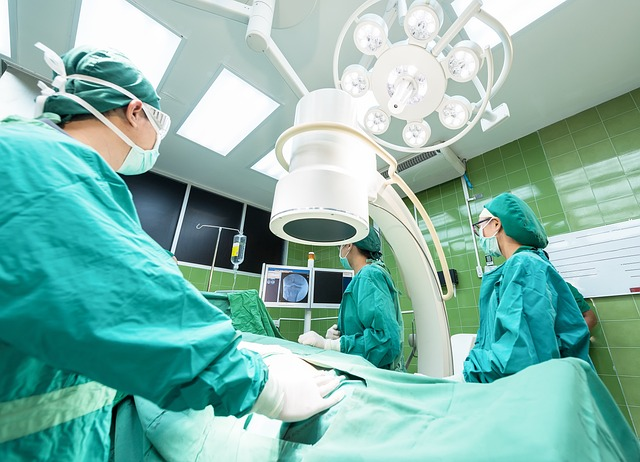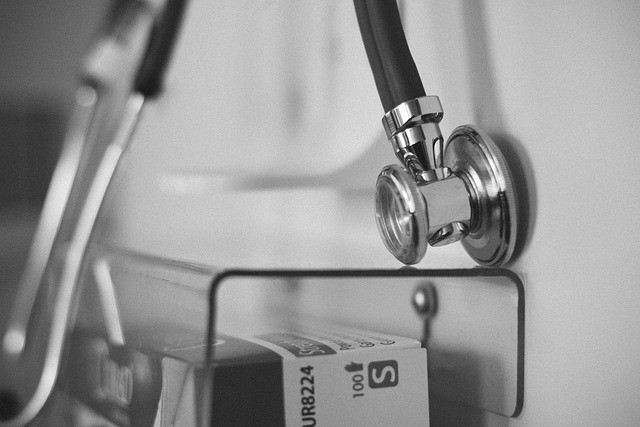In our rapidly evolving world, the need for high-quality healthcare facilities has never been more critical.
Whether it’s a small clinic in a rural area or a state-of-the-art hospital in a Houston, constructing healthcare facilities is a complex yet rewarding endeavor.
At RJT Construction, we understand the significance of healthcare construction and have compiled this comprehensive guide to help you navigate the intricacies of building a healthcare facility.
Planning and Preparation for Your Healthcare Construction Project
Before laying the first brick, healthcare construction company, careful planning is essential to ensure the success of your healthcare facility project.
Define Your Purpose Aided by a Healthcare Construction Company
When embarking on the construction project of a healthcare facility, the initial crucial task is to distinctly outline its intended function. Is it meant to serve as a primary care clinic, a specialized hospital, or perhaps a long-term care facility? This clear understanding of your facility’s purpose serves as the foundation for steering the entire healthcare construction projects endeavor in the right direction.
RJT Construction is available to help with your healthcare facilities job.
Request a free quote today and be sure to look at our featured projects.

Budgeting
To effectively manage your project, it’s crucial to create a practical budget. This budget should cover all the expenses, such as construction costs, equipment, staffing, and ongoing operational needs. Seeking guidance from financial experts can help guarantee that your budget matches your project objectives. This financial planning is vital for your project’s success.
Location Selection
Choosing the perfect spot for your healthcare center holds immense importance. Think about how easy it is for people to reach, its closeness to transportation, and the health requirements of the local community. Performing a comprehensive site evaluation is vital to determine if it’s a feasible location.
Regulatory Compliance
Navigating healthcare regulations is a complex task. Ensuring compliance is essential to avoid legal issues and maintain the safety and quality of care.
Legal Requirements
It’s important to get to know the healthcare construction rules at the federal, state, and local levels. This includes understanding building codes, zoning laws, and the licenses you need. To make sure you’re following all the right rules, it’s a good idea to talk to legal experts who specialize in healthcare regulations.

Healthcare Accreditation
To ensure you achieve the highest standards of care, it’s crucial to pursue accreditation from respected healthcare organizations like the Joint Commission or the Healthcare Facilities Accreditation Program (HFAP). These accreditations are essential not only for the safety of patients but also for ensuring eligibility for reimbursement. Meeting these accreditation standards signifies a commitment to quality healthcare, providing the benefits and peace of mind to both healthcare providers and the individuals they serve.
Environmental Considerations
Environmental sustainability plays a growing role in healthcare today. It’s essential to think about using eco-friendly construction materials and energy-efficient technologies when designing healthcare facilities. These choices help lower the environmental impact of healthcare facilities construction and settings, making them more responsible and eco-conscious. By making these environmentally friendly choices, healthcare providers can contribute to a healthier planet while ensuring the well-being of their patients.
Design and Architecture
Designing a healthcare facility requires both knowledge and a deep understanding of the unique needs of patients, staff, and visitors.

Functional Design
Working closely with architects and healthcare planners is crucial in designing a practical layout. This ensures the smooth movement of patients while reducing the chances of infections. It also boosts the effectiveness of our dedicated staff. Our collaborative efforts create a healthcare environment that prioritizes both safety and efficiency.
Patient-Centered Design
When designing healthcare spaces, it’s essential to put patient well-being first. Prioritizing patient comfort and safety involves selecting soothing colors, comfortable and supportive furniture, and maximizing the use of natural light. These elements work together to establish a healing atmosphere, promoting a positive experience for patients while maintaining a professional environment.
Technological Integration
We are actively developing a strategy to incorporate advanced healthcare technology solutions into our system. This includes the implementation of electronic health record (EHR) systems and telemedicine tools, all aimed at improving patient care. These innovations and solutions will enable us to provide more efficient and convenient healthcare services, ensuring better outcomes for our patients.

Construction Phases
Once your plans are in place, it’s time to break ground and begin construction. This phase design build project involves several key steps.
Site Preparation
The first step in our construction process involves clearing the site and establishing effective drainage. This is essential to prevent water-related issues in the future. Once the site is ready, we carefully lay the foundation, a critical phase that ensures the stability and strength of the entire structure.
Building Shell
In the initial phase of healthcare construction project, our primary focus is on creating the building’s outer framework. This involves constructing sturdy walls, installing reliable roofs, and adding exterior finishes. Our goal is to make sure the building can withstand different weather conditions while adhering to stringent safety standards.

Mechanical and Electrical Systems
It is crucial to set up plumbing, HVAC (heating, ventilation, and air conditioning), and electrical systems when constructing a medical facility. These essential components ensure both patient comfort and the smooth functioning of the facility. Properly installed systems help maintain a comfortable environment for patients and support the efficient operation of medical equipment.
Safety and Infection Control
Healthcare facilities must prioritize safety and infection control to protect patients, staff, and visitors.
Infection Control Measures
To safeguard public health, it is crucial to establish rigorous infection control measures in medical facilities. These include dedicated isolation rooms, accessible hand hygiene stations, and effective ventilation systems. These protocols play a vital role in curbing the transmission of illnesses and ensuring the safety of all individuals within a given environment.
Emergency Preparedness
Creating thorough emergency plans is crucial to handle various crises, such as natural disasters and fires. These plans should encompass detailed strategies for safety and recovery. Consistent drills and staff training play a pivotal role in ensuring everyone knows their roles and responsibilities during emergencies. Preparedness is our shield against the unexpected, safeguarding lives and property.
Accessibility
It is crucial to make sure your building is easily accessible to everyone, including those with disabilities, as required by the Americans with Disabilities Act (ADA). This law ensures that people with disabilities have equal access to public spaces. By following ADA guidelines, you can create a welcoming environment for all visitors, promoting inclusivity and fairness.
Interior Finishes and Furnishing
The interior of your healthcare facility should promote healing and comfort.
Medical Equipment and Furnishings
When outfitting a medical facility, it’s crucial to carefully choose medical equipment and furnishings. Opt for items that are sturdy, simple to maintain, and provide comfort for both patients and staff. Prioritizing durability ensures long-term functionality, easy cleaning maintains hygiene standards, and comfort enhances the overall healthcare experience. Make thoughtful selections to create a welcoming and efficient medical environment.
Art and Decor
To establish a calming ambiance, carefully choose art and decorations. It’s crucial to cater to the tastes of your specific patient group. By selecting artwork and decor that resonate with their preferences, you can create a welcoming and tranquil environment that promotes well-being and comfort. This thoughtful approach enhances the overall experience for patients seeking care.
Staffing and Training
Recruiting and training the right team of staff is essential for the successful operation of your team at your healthcare facility.
Hiring Healthcare Professionals
In your pursuit of excellence in patient care, it is crucial to attract and onboard proficient healthcare experts. This includes dedicated doctors, compassionate nurses, and competent support staff. Ensuring that these skilled professionals share your unwavering commitment to patient well-being and patient outcomes is paramount to delivering top-quality healthcare services.
Staff Training
It is crucial to offer continuous training and learning opportunities for your team, ensuring they remain informed about the most recent advancements in medical procedures and technology. This helps maintain high-quality patient care and keeps your healthcare facility at the forefront of the healthcare industry.
Patient Experience and Quality Assurance
Delivering high-quality care and a positive patient experience is paramount in the healthcare industry.
Patient-Centered Care
Creating a patient-centered care environment is crucial. It means putting patients first, valuing their feelings, and respecting their choices. Empathy, clear communication, and adherence to patients’ rights are essential. This approach ensures a compassionate and respectful healthcare experience, enhancing trust and overall well-being.
Continuous Quality Improvement
To improve patient outcomes and enhance the level of care and services, it is essential for hospitals to establish quality assurance initiatives. These programs involve systematically monitoring healthcare practices and collecting feedback from patients. By doing so, healthcare providers can make ongoing improvements, ensuring that the care they deliver remains of the highest quality and meets the needs of their patients effectively.
Post-Construction Evaluation
Once your healthcare facility solution is operational, conduct a thorough evaluation to ensure that it meets its intended goals.
Performance Metrics
To gauge how well your facility is doing, it’s crucial to set up important measuring tools. These metrics include patient happiness scores, infection levels, and financial health. These indicators help you understand how effective your facility is straightforwardly.
Adaptation and Expansion
It’s crucial to stay ready to adjust and grow your healthcare facility to keep up with the changing healthcare environment and the evolving requirements of your local community. This flexibility ensures that you can continue to provide high-quality care and improve patient outcomes as circumstances evolve.
Step-by-Step Construction Phases for Healthcare FacilitiesReview of Behavioral Health Hospital Construction Projects and the Role of Healthcare Builders
According to S.C. Builders, “As healthcare builders, we’ve made it our mission to prioritize behavioral health in our construction projects”. Constructing behavioral health facilities is far from a simple task. It requires a deep understanding of the unique requirements of these institutions, strict adherence to the Department of Health’s new construction regulations, and a commitment to implementing necessary upgrades.
A comprehensively planned review and a rigorous inspection process are essential to ensure that every aspect of the construction services the healthcare facility construction meets the highest standards. Through the many healthcare facilities we’ve built, our core aim remains steadfast: to create spaces that accommodate the needs of service providers and patients alike, consistently surpassing expectations in behavioral health hospital construction.
Conclusion
Constructing a healthcare facility is a significant undertaking that requires meticulous planning, attention to detail, and a commitment to patient well-being. At RJT Construction, we are dedicated to helping you navigate this complex process and create a healthcare facility that meets the highest standards of care. By following the steps outlined in this guide, you can contribute to your healthcare construction projects for the betterment of your community and the health and well-being of its residents. Building a healthcare facility is not just about bricks and mortar; it’s about building a healthier future for all.
FAQs
What are the trends in the design and construction of medical office buildings in 2022 – 2023?
In 2022-2023, we’re seeing a trend towards the creation of flexible spaces in both medical facilities and office buildings. This flexibility allows for easy adaptation to evolving healthcare needs, whether it’s accommodating more patients or adjusting to new healthcare practices. Green building practices are also gaining traction, with a focus on sustainable materials and energy-efficient systems.
How has COVID-19 influenced the design of healthcare facilities?
COVID-19 has significantly impacted how healthcare facilities are designed. We now see increased emphasis on infection control measures, like improved ventilation systems, touchless fixtures, and the inclusion of telehealth rooms. These design elements aim to reduce the spread of infectious diseases within the facility.
How does outpatient care influence medical building design?
The growing trend towards outpatient care from hospitals has driven the need for medical building designs that support quick and efficient patient turnover. This might include multiple entrance and exit points to manage patient flow, or the incorporation of technology to streamline and complete patient check-in and check-out processes.





